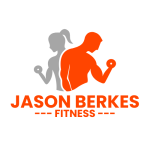Are you tired of fad diets and ineffective workout routines? Look no further! This comprehensive guide will delve into the most effective fat loss training strategies, helping you achieve your fitness goals and unlock a stronger, leaner you.
Understanding Fat Loss
Before diving into training strategies, it’s crucial to grasp the fundamentals of fat loss. Here are the key concepts:
- Caloric deficit: Reduce daily caloric intake or increase expenditure to create a deficit, prompting the body to burn stored fat.
- Macronutrient balance: Aim for a balanced diet consisting of protein, complex carbohydrates and healthy fats.
- Progressive overload: Gradually increase weight or resistance to challenge muscles and promote growth.
I. Resistance Training Strategies
- Compound Exercises: Focus on squats, deadlifts, bench presses and rows to work multiple muscle groups simultaneously.
- Progressive Overload: Increase weight or reps over time to challenge muscles.
- High-Intensity Interval Training (HIIT): Incorporate HIIT into resistance training for enhanced caloric burn.
- Plyometric Training: Incorporate explosive movements like jump squats and box jumps.
II. Cardiovascular Training Strategies
- Steady-State Cardio: Engage in 30-45 minutes of moderate-intensity cardio (jogging, cycling).
- HIIT Cardio: Alternate between high-intensity intervals (sprints, burpees) and recovery periods.
- Low-Intensity Steady-State (LISS) Cardio: Perform 45-60 minutes of low-intensity cardio (walking, yoga).
III. Nutrition Strategies
- Caloric Deficit: Reduce daily caloric intake by 500-1000 calories.
- Macronutrient Balance: Aim for 1.6-2.2 grams of protein, 2-3 grams of complex carbohydrates and 0.5-1 gram of healthy fats per kilogram of body weight.
- Meal Frequency: Eat 5-6 meals spaced out every 2-3 hours.
- Hydration: Drink at least 8-10 glasses of water per day.
IV. Recovery and Mindset Strategies
- Adequate Sleep: Aim for 7-9 hours of sleep.
- Active Recovery: Incorporate light yoga or walking.
- Mindset: Focus on progress, not perfection.
- Accountability: Find a workout buddy or join a fitness community.
V. Sample Workout Plan
Here’s a sample workout plan incorporating these strategies:
Monday (Chest and Triceps):
- Barbell bench press (3 sets of 8-12 reps)
- Incline dumbbell press (3 sets of 10-15 reps)
- Tricep pushdown (3 sets of 12-15 reps)
Tuesday (Back and Biceps):
- Pull-ups (3 sets of 8-12 reps)
- Barbell rows (3 sets of 8-12 reps)
- Dumbbell curls (3 sets of 12-15 reps)
Thursday (Legs):
- Squats (3 sets of 8-12 reps)
- Leg press (3 sets of 10-12 reps)
- Lunges (3 sets of 12-15 reps per leg)
Friday (Shoulders and Abs):
- Shoulder press (3 sets of 8-12 reps)
- Lateral raises (3 sets of 10-12 reps)
- Planks (3 sets of 30-60 seconds)
VI. Tracking Progress
- Weight: Monitor weight changes.
- Body Fat Percentage: Track body fat percentage.
- Progress Photos: Take regular progress photos.
- Workout Log: Record workouts.
VII. Conclusion
Embarking on a fat loss journey requires dedication, patience and persistence. Incorporate these training strategies, nutrition plans and recovery techniques to unlock your full potential. Celebrate small victories, stay consistent and believe in yourself – you’ll be lean and mean in no time!

